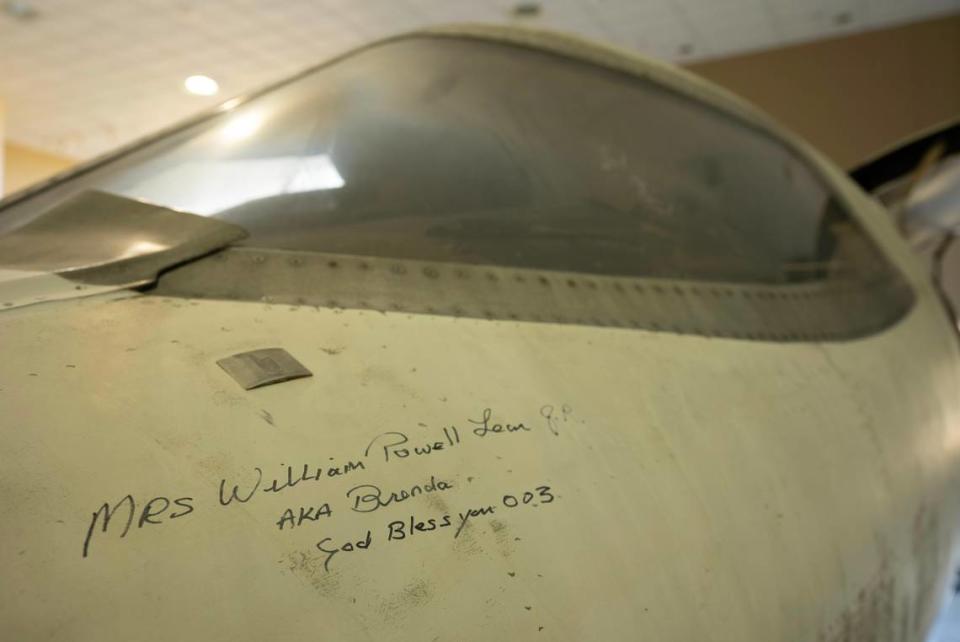First Learjet sold, ‘part of the fabric of Wichita,’ trucks home to take flight again
- Oops!Something went wrong.Please try again later.
- Oops!Something went wrong.Please try again later.
As the unofficial historian of Learjet, Dick Kovich admits he’s “actually done dumpster diving” to save items related to the iconic brand.
That’s why he and other former Learjet employees and aficionados have kept tabs on the first Learjet ever sold to a customer: 1964’s Lear Jet 23, registered N200Y with the FAA and also known by its manufacturer’s serial number, 23-003. Back then, the company’s name was two words instead of one.
“It was the first plane that was specifically built as a business jet,” said Kovich, a former Learjet employee who went on to work for the brand after it was purchased by other companies, including, finally, Bombardier in 1990.
Bill Kinkaid, who worked for Learjet and still is at Bombardier Learjet, is someone else who watches over old aircraft, including this one.
“The real significance of it is it created the business jet industry that we know today.”
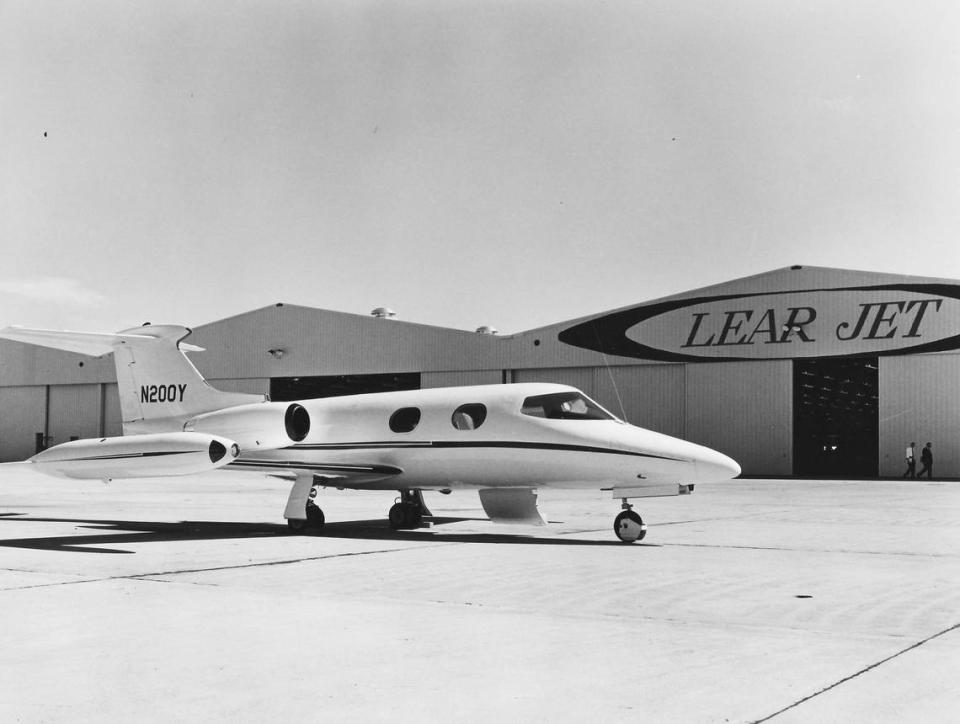
Of the more than 10,000 business jets built in Wichita, he said, “This aircraft’s delivery started that timeline.”
A number of years ago, Kovich got word the plane was no longer registered with the FAA, so he did some digging.
“It took us a while to find the airplane.”
Last year, he got a call from the father of the man who owned it.
“I hear you want to buy a Learjet.”
Thus began what likely will be a long — and expensive — journey to save and restore the plane through the Classic Lear Jet Foundation, which formed in August 2022 and hit a major milestone this summer with the acquisition of the plane.
“We spent a couple of months just trying to figure out if it was feasible to even do it,” Kinkaid said.
Before the group officially formed, he, Kovich and others reached out to the aerospace community to see if there was support to pursue it.
“The results were pretty overwhelming,” Kinkaid said.
Al Higdon can explain why.
Higdon joined Learjet a month after that first plane was certified to be marketed and stayed until 1971, when he left to start what became the Sullivan Higdon & Sink ad agency, where Learjet became a customer.
He said of all the great aviation products he’s been associated with, “The Learjet uniquely fosters and encourages passion.”
When he heard of the new foundation and its ambitious goal, Higdon said, “I thought, what an enormous challenge, but if any organization of people can make it happen, these folks can.”
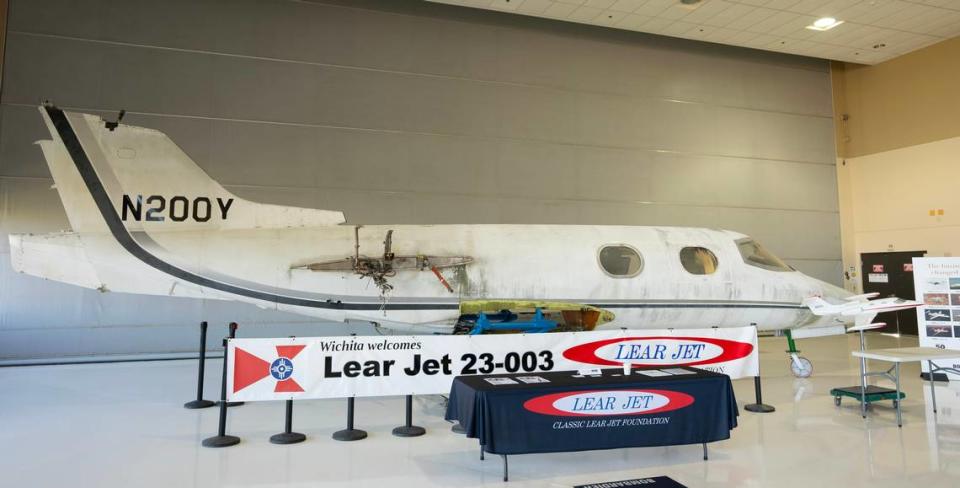
‘Easiest to sell’
Just as Scotch tape is commonly used as a name for all tape, Xerox is another name for a copy and Coke can mean soda in general, so too has Learjet become something of an all-encompassing name.
“The Learjet name is still synonymous with private jet travel,” said Lynn Krogh, CEO of Denver-based International Jet Aviation.
In 1979 when he co-founded the company — which, along with managing planes, is something of a taxi service for the sky — Krogh said the business started its fleet with a Learjet “because the Learjet name was the easiest to sell in the charter world.”
Even today, he said, customers will say they want to book a Learjet when what they mean is they want to book a private jet.
Chris Marshall, who worked at Learjet for a dozen years, said, “The Learjet name has just had such a panache and an influence.”
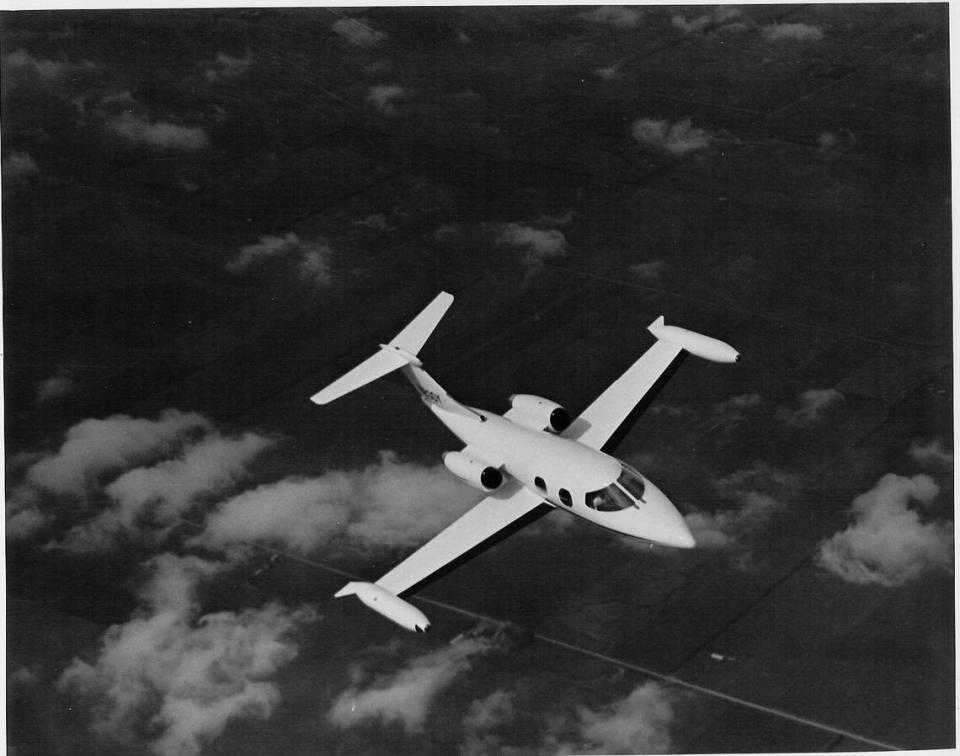
He said Learjet founder Bill Lear brought two concepts together in a new way: jet propulsion, which the airline industry started using in the late 1950s, and smaller business planes. At the time, a lot of companies used twin engine piston planes for corporate travel.
“The business world was moving kind of slow,” Kinkaid said. “If you’d fly a jet for business, you’d have to get a plane basically designed for military purposes.”
The planes cost a lot and were expensive to operate.
The Learjet 23 proved to be a relatively economical aircraft that would allow business people to do more in a day.
The 2 in the 23 stands for twin engine and the 3 indicates the company’s third design iteration.
The plane had a flying range of about 1,200 miles, or two to two and a half hours. Its speed was Mach .81 — or 81% of the speed of sound, which translates to about 500 mph, depending on altitude. Its original altitude reached 41,000 feet but quickly jumped to 45,000 and later rose to 51,000 for other Learjet models.
With the advances, Kinkaid said a business person could travel to several cities in a day “and be back home for dinner.”
He said the plane was configured the same as any jet airliner of the day but could easily get in and out of small airports.
“It was very versatile in its operation.”
The Learjet went into production in 1962 and took its first flight Oct. 7, 1963 — the 60th anniversary the foundation is celebrating with assistance from Bombardier this Oct. 7 (check out the anniversary tab at classiclear.org for details).
Due to pilot error, the first Learjet 23 had an accident in June 1964. The pilots walked away but the plane had to be scrapped.
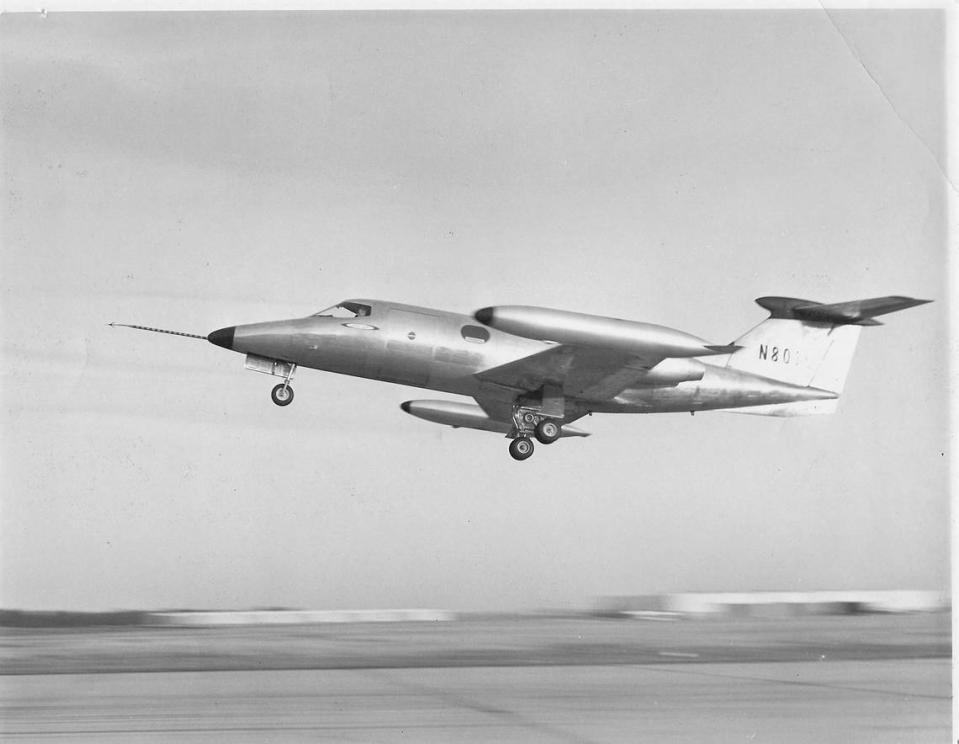
The aircraft type was certified not long after. Then, on Oct. 13, 1964, it was delivered to the first Learjet customer, Chemical and Industrial Corp. of Cincinnati.
The company paid $395,000, or about $3.9 million in today’s money. As more features were added, the plane’s price quickly jumped to about $550,000, which is $5.4 million today.
Chemical and Industrial Corp. leased the plane back to Learjet for it to occasionally make demonstrations to potential customers.
“The market was sort of caught off guard, and the Learjet brand was the leading brand for several years,” Marshall said.
Others, such as Wichita’s own Cessna and Beechcraft, followed with more business jets.
There also was a second test plane that was produced before the first Learjet sold. That plane is in the Smithsonian’s National Air and Space Museum.
It’s important to a lot of people to have something to mark the achievement in Wichita, too.
“It’s a part of the fabric of Wichita,” Marshall said. “That story deserves to be remembered.”
‘God bless you’
The first step in saving the Learjet was to send a team to the Bartow Executive Airport in Florida where it had been sitting for almost a dozen years in the humid outdoors.
“Knowing how long it’s been there, I was impressed that it wasn’t worse off than it was,” said Joel Weber, who worked at Learjet for a decade.
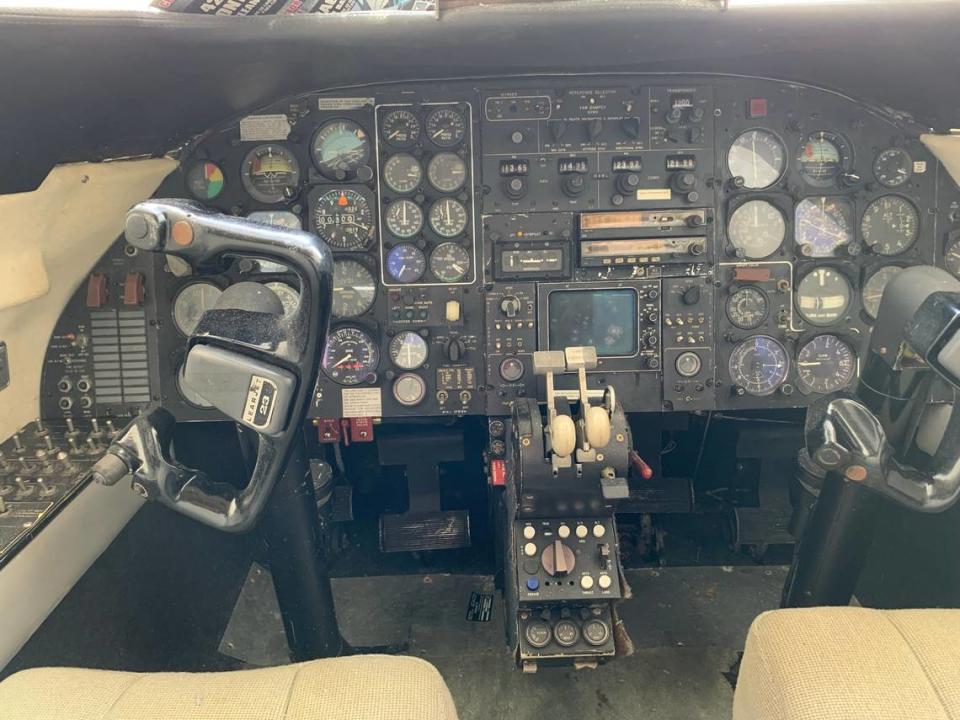
Weber now works for Lee Aerospace, which offered to fly the team to inspect the plane and later to fly representatives to Tennessee to negotiate its purchase. Lee is one of the numerous companies to offer in-kind support to the foundation.
“Those in-kind donations are just amazing,” Kovich said.
Even though the plane had sat unlocked, it had not been vandalized.
“The cockpit was complete,” Kovich said. “It even had an 8-track tape player in the cabin.”
The 8-track player was something else Bill Lear helped invent.
Marshall enjoyed seeing the jet, which continues to inspire so many jets today, sitting there.
“The beauty of those lines of that airplane just shone through all that age and neglect.”
Kovich said the team didn’t start the engines, partly because there was corrosion and partly because of wasp nests in them, but, “The lights came on. The instruments came alive.”
The team decided the plane was worth saving, and that’s when the foundation formed.
There were hopes the owner would donate it, but Kovich said he needed money for his flying service.
They agreed on $90,000 and that the foundation could move it to Wichita to store it out of the elements while it raised money to buy it. The plane now sits in Bombardier’s Building 14 in Wichita, which had been a Learjet delivery center until Bombardier ceased Learjet production after the final Learjet was delivered last year.
Some Learjet retirees came to see off the partially disassembled plane in Florida before it was trucked to Wichita, as did Brenda V. Lear, a British expatriate who was married to the late Bill Lear Jr.
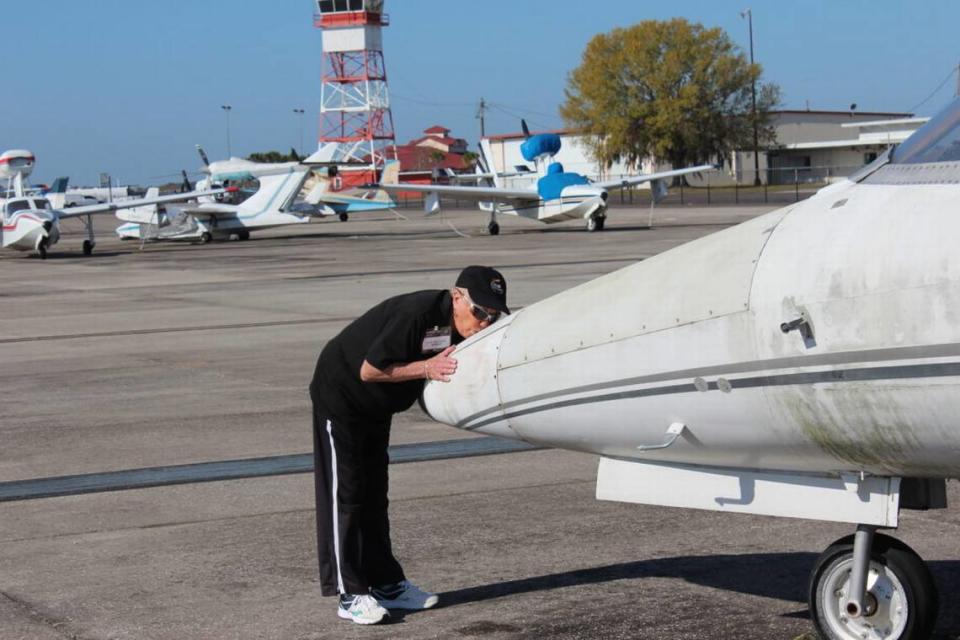
Brenda Lear said her late mother-in-law, Moya Lear, kissed the nose of the first Learjet as it came off the factory line, “And so I kissed it goodbye on its way to hospital.”
She also wrote, “God bless you 003,” on the side of the plane.
Lear said her father-in-law would loved that the foundation formed to save it.
“Oh, Dad would be thrilled.”
‘The legacy of Learjets’
Along with contributing her own money to the restoration cause, Brenda Lear has had another key role in the project so far.
She helped recruit her friend Clay Lacy, who is known as Mr. Learjet, according to Krogh.
Lacy had been an advisor to Bill Lear and was the first West Coast distributor for Learjet and then started his own California company to market and sell Learjets, particularly to celebrities, such as Frank Sinatra, John Denver, Johnny Carson, Jack Nicklaus and Arnold Palmer.

Marshall said the brokerage market was another part of the Learjet success story.
“This aircraft played a significant role in the emergence of that market,” he said. “The Learjet became this phenomenal product that everybody wanted, and there had to be a way to buy it.”
Lacy and Krogh partnered to offer the foundation ideas and connections, and the men donated enough money to complete the plane’s acquisition.
“I felt that this was really something to keep the legacy of Learjets out there in front of the public and to let future generations know about,” Krogh said.
Now, the actual work on it can begin, which will include help from past employees who worked on this very plane as it came off the assembly line.
“There are still some of those guys around who are just itching to get their hands on it and bring it back to life,” Marshall said.
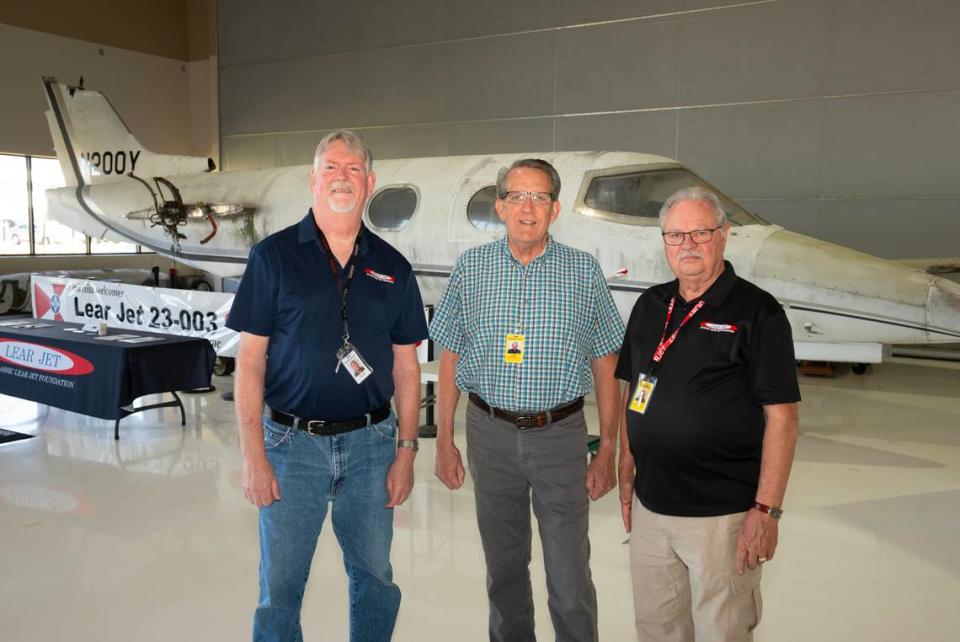
Though the private jets of today may have fancier interiors and more electronic instrumentation, Krogh said they still fly close to the same speed as the Learjet and at about the same altitude.
“Bill Lear was a pretty advanced guy, a pretty much ahead-of-his-time person as an engineer and an inventor and a businessman,” Krogh said. Remarkably, he said, “Nothing has changed in 60 years, in a way, in terms of the overall capacity of what a private jet can do.”
What has changed, of course, is cost. With cash and in-kind donations, the conservative estimate to restore the plane is $2 million to $5 million, partly depending on what the condition is when its internal structure can be inspected more closely.
“Funding is key to the success of this venture,” said Marshall, who is serving as the lead fundraising director for the foundation.
Foundation members have talked with the management team of Doc, the restored B-29 bomber, for advice on how to proceed, Kinkaid said.
“Doc told us essentially how to make this happen.”
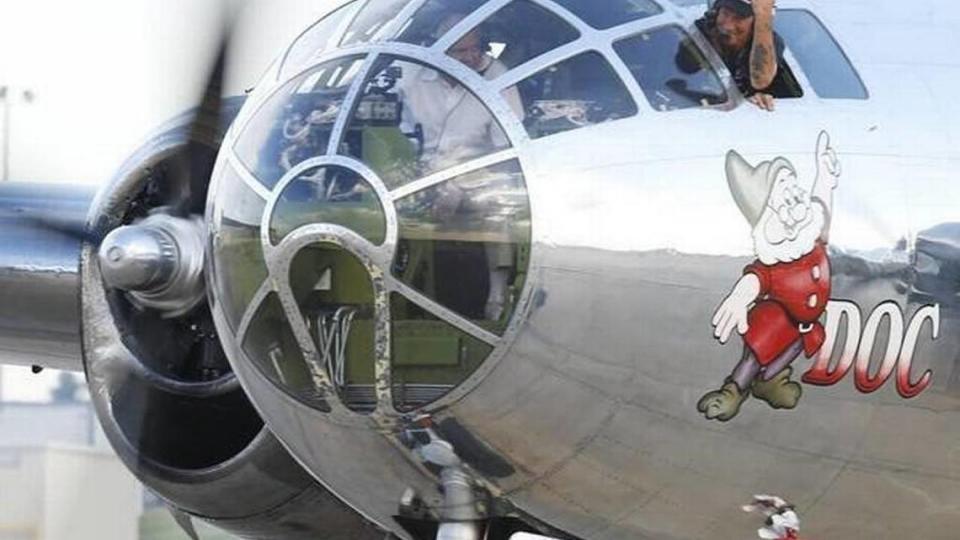
There’s a “ways to help” section to click on classiclear.org for various options to contribute.
The foundation wants to take the restored plane to air shows, have it on display in Wichita and offer rides “so people can see and hear and experience what the original Learjet was like,” Marshall said.
When it’s finally airworthy — it likely will take three to five years — the foundation members believe it will be the only Learjet 23 still flying in the United States.
“We intend to fly it as a living flight history airplane,” Kovich said. “We want to show what you can do it you have the passion and the foresight to see something, to see a need, and get kids interested in aviation.”
He said it will offer a chance to “talk to people about the significance of this airplane and the industry.”
“The airplane will not only represent Learjet, but it will represent Wichita.”
Higdon said it represents a pioneering achievement.
“It does signal a milestone event in the history of the industry.”
He said as Learjet was racing to be first, there was a “sort of us-against-the-world mindset.”
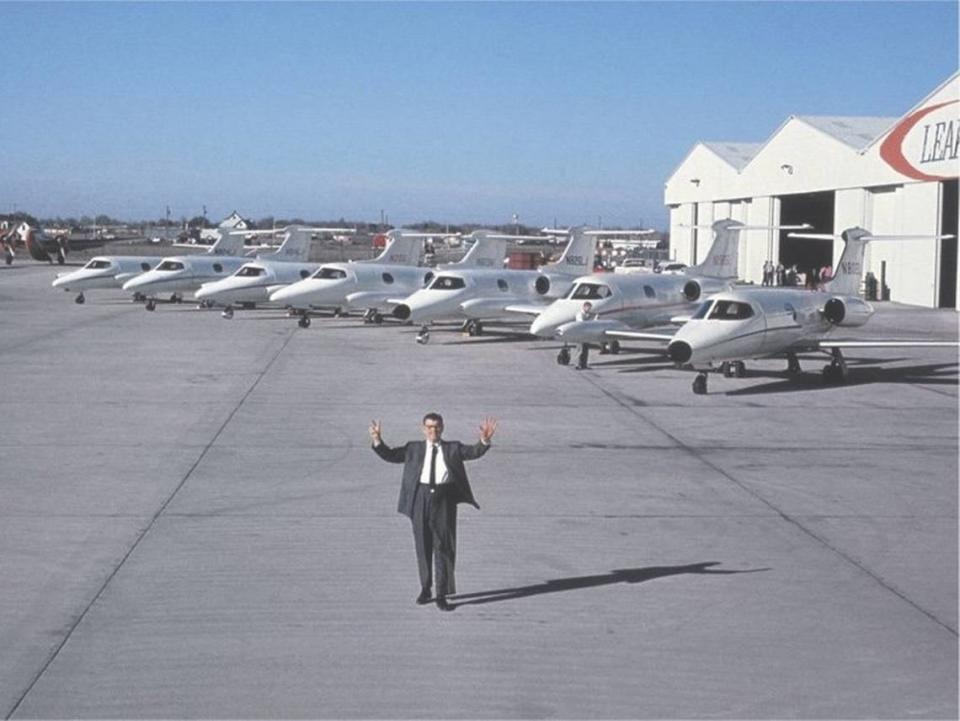
Once Lear and his team did it, Krogh said the company shrewdly placed its product everywhere it could, such as movies, TV shows and “all kinds of things where it would get out in the public eye.”
Then artists and others continued the publicity gratis, such as when Carly Simon sang of a rake who flew his “Lear jet up to Nova Scotia/To see the total eclipse of the sun.”
Marshall said he knows so many 35- and 40-year employees of Learjet “who dedicated their careers” to building the planes, and that’s part of his interest in preserving the first one sold.
Lee Aerospace’s Weber said he, too, is interested for the sake of Wichita, where so many people made their livings making 3,055 Learjets, including 104 Learjet 23s.
“It was first. That’s what’s special. . . . It has such an impact on Wichita and beyond.”
